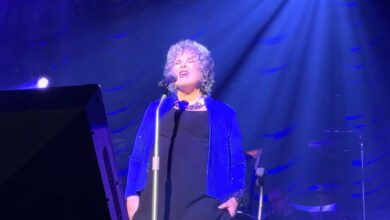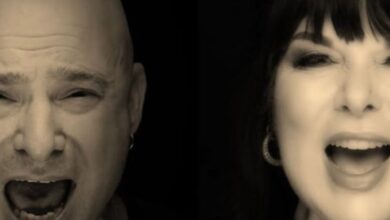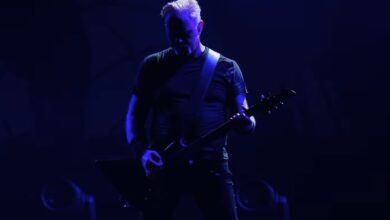Metallica’s “Harvester of Sorrow” Devastates Philly During May 23, 2025 M72 Tour Celebration
When Metallica unleashed “Harvester of Sorrow” at Philadelphia’s Lincoln Financial Field on May 23, 2025, it struck the stadium like a thunderclap. The song—an early homage to trauma and rage from their 1988 album …And Justice for All—opened the second storming section of the night’s set. Amid elaborate LED visuals and stadium-wide darkness, the track’s ominous groove and brutal lyrics grabbed the audience’s full attention, signaling that this was no ordinary stadium show.
By 2025, Metallica was deep into its five-year-long M72 World Tour, built around their eleventh studio album, 72 Seasons. Blending nostalgia and novelty, the tour showcased the band’s willingness to balance old-school aggression with modern intensity. Their June return to Philadelphia marked a full-circle moment: Metallica had last stormed the city seven years earlier, and now returned to conquer it once more with a set that celebrated decades of heavy metal dominance.
Philadelphia has always held a special place in Metallica’s touring lore. The band memorably played a surprise parking lot show in South Philly in 1997, cultivating a legacy of deep-rooted fan connection. This show, nearly thirty years later, felt autobiographical—an epic revisiting of places where they’d planted seeds, now harvested in thunderous applause and pit-shaking feedback.
As the tortured bassline kicked in, Robert Trujillo’s low-end thrum laid the groundwork for the song’s slow burn. James Hetfield’s rhythm guitar cut through, locking in the groove, while Kirk Hammett unleashed piercing lead fills that echoed past trauma and psychological torment. Lars Ulrich’s double-kick drums crashed like battlefield percussion, a signature blend of precision and primal chaos that has driven this song’s live legend.
Philadelphia’s 65,000-strong crowd didn’t need an invitation—they roared in response. Concert reviews called the sound “five times cleaner than the openers,” highlighting the impeccable mix that let every instrument breathe in the stadium air. Fans in the lower bowl reported vocals and guitar “cutting through perfectly,” ensuring that the brutal emotional impact of “Harvester of Sorrow” wasn’t lost, even in such a massive arena.
The song’s thematic narrative—about traumatic breakdown leading to destructive rage—resonated in a special way live. Hetfield’s deadpan vocal delivery sounded more chilling in person, his control and grim clarity amplified by the M72 production. The song stood out as a hypnotic journey, pulling the audience deeper into an emotional vortex. Metallica aren’t just playing songs—they’re conjuring experiences.
This performance also highlighted the band’s technical maturity. Kirk used his Wah Wah pedal to twist the solo into surreal territory, adding a haunting resonance that held the audience spellbound. Reviewers noted that Hammett’s solos on songs like “Fight Fire with Fire” earlier in the night had already set a high bar—but here, his emotional storytelling reached another level.
The band strategically placed “Harvester of Sorrow” after “Creeping Death,” pairing early career intensity with mid-era introspection. The contrast was stark: one moment a Biblical narrative of destruction, the next a shadowed dive into psychological collapse. This narrative pacing reflected Metallica’s ongoing mastery of live setlist storytelling—and it drove audience energy through every crescendo.
Many longtime fans commented that hearing “Harvester of Sorrow” live in full was a bucket-list experience. Though it had been played less frequently in recent years, its return felt meaningful. It reminded listeners that Metallica’s greatness isn’t confined to their late-’80s heyday; the emotional depth of that period still packs punch decades later.
For the band, the performance was also a nod to their own legacy and resilience. They debuted the track live before the album had even been released back in 1988, showing a willingness to test raw material in front of fans. Decades later, they still play it with ferocity—proof that this song remains central to their identity as heavy-metal pioneers.
The show kept rolling with classics from all eras: “Holier Than Thou,” “King Nothing,” newer tracks like “If Darkness Had a Son,” and of course their modern anthem “Lux Æterna.” But it was the mid-set power of “Harvester” that delivered the emotional peak—a moment where nostalgia, aggression, and collective release fused seamlessly.
Photos and fan-shot videos quickly went viral, capturing the synchronized headbangs and fist-pumping mass of humanity that surrounded the stage. In a time when stadium shows run the risk of feeling impersonal, this song reconnected audience and artist through sheer emotional intensity.
Sound checks on Reddit confirmed what many said offline: Metallica’s audio team had dialed in a pristine mix. Fans marveled at the clarity and separation, even in open-air conditions. Many credited the band’s veteran experience—they know how to translate power into purity without sacrificing emotional weight.
In the wake of this performance, setlist tracking groups noted a rise in live “Harvester” requests. While the song has appeared sporadically since the ‘90s, it’s clear that delivering it with renewed intensity on this tour is reconnecting a generation of fans to the darker corners of Metallica’s work.
More broadly, this version exemplified Metallica’s strength as a multi-era band—it’s not just nostalgia, but relevance. The mix of technical polish, thematic gravitas, and raw emotion showed why they remain at the top of metal, decades in.
Ultimately, the Philadelphia performance of “Harvester of Sorrow” was both a tribute and a statement. It honored their earliest days while reaffirming their current creative fire. At Lincoln Financial Field, they didn’t just revisit their past—they summoned it with ferocity and meaning.
As Metallica continue the M72 World Tour, this show stands as a reference point—a raw, emotional, perfectly executed moment where the band’s history and power converged. In a career full of peaks, this might just remain one of their darkest, most powerful live summits.





